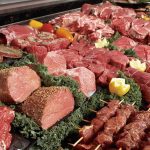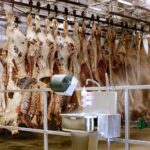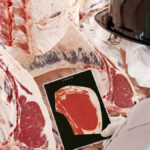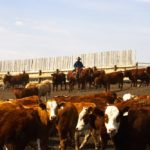
Tag Archives meat packers

U.S. adds packing plant capacity
Free Market Reflections with Steve Dittmer
Recently, I tried a package of Wagyu pre-made ground beef patties. They were priced right so I grilled them up. They were very good. Where did I get them? At Walmart. It wasn’t many years ago one could only buy Select grade beef at Walmart. Reflecting demand for higher-quality beef from customers, now they carry […] Read more

Show us the money, Part 1: What does the producer share of the retail beef dollar mean?
When looking at the farmer share of the retail dollar, we must recognize that U.S. prices still dominate the price structures of both our cow-calf and feedlot sectors
A common concern in agricultural circles is what proportion or percentage of the price of a litre of milk, a loaf of bread or a beef steak makes its way back to the producer. I have written and spoken about this before, but I cannot do so again without first admitting that I have sometimes […] Read more

Beef industry faces packer fallacies
Prime Cuts with Steve Kay
Misinformation and even disinformation are not new to the U.S. beef industry. It’s fascinating, though, how the onset and impact of the coronavirus pandemic amplified the claims of critics of the industry, especially those of the beef processing sector. Most critics claim the “Big Four” packers control more than 80 per cent of the U.S. […] Read more

Leverage in the cattle market at last
Prime Cuts with Steve Kay
Leverage is everything when it comes to buying or selling many goods and services. The cattle market is no exception to this, whether it is at the auction market or in the feedlot. U.S. cattle feeders over the past 18 months have had a tough lesson in what happens when they don’t have leverage over […] Read more

U.S. packer profit margins jumped 300 per cent during pandemic, economists say
Increased costs don't explain higher profits, White House advisors say
Washington | Reuters — Four of the biggest meat-processing companies, using their market power in the highly consolidated U.S. market to drive up meat prices and underpay farmers, have tripled their own net profit margins since the pandemic started, White House economics advisers said. Financial statements of the meat-processing companies — which control 55 to […] Read more

Coronavirus infections at U.S. meat plants far higher than previous estimates, House subcommittee hears
Cases and deaths from COVID-19 among workers at the leading U.S. meatpacking plants were three times as high as previously estimated, according to a report by the House Select Subcommittee on the Coronavirus Crisis seen by Reuters. The subcommittee surveyed major meatpackers Tyson Foods, JBS USA, Cargill, National Beef , and Smithfield Foods, which together control over 80 percent […] Read more

Processing capacity is not the issue
Prime Cuts with Steve Kay
Beef processing capacity and plant capacity utilization are two different subjects. So I have been fascinated in recent months how some in the U.S. beef industry have equated the two. Their argument is that temporary plant closures and slowdowns in April and early May revealed that the industry needs a lot more capacity, mostly through […] Read more

Pandemic-battered beef industry may still be in for a rough ride
While Cargill has improved its pandemic protocols, the union representing plant workers wants to see more changes as they head into contract negotiations this winter
Cargill’s Canadian meat plants have made some progress in rebounding from the initial effects of the COVID-19 pandemic, but a possible strike in the new year may pose a major setback for the company and the beef industry. “The company has to fix the structural problems that led to the outbreak,” says Michael Hughes, the […] Read more

Dittmer: Natural progression, voluntary adjustment and coercion
Free Market Reflections with Steve Dittmer
There is much discussion down here about the negotiated cash market, alternative marketing arrangements (AMA), the “30/14” idea and proposed federal legislation to force more negotiated cash sales (50/14). With the percentage of cash market sales in the 20 per cent range, cattle feeders who often sell cash and those who use AMAs (like formulas), […] Read more

Beef producers get a raw deal
Prime Cuts with Steve Kay
North America’s cattle producers were the first in the beef chain to be impacted by the spread of the COVID-19 virus from epidemic to pandemic. Yet they are getting a raw deal from their national governments in terms of financial or other aid. The Canadian and U.S. governments were quick to declare that meatpacking was […] Read more



